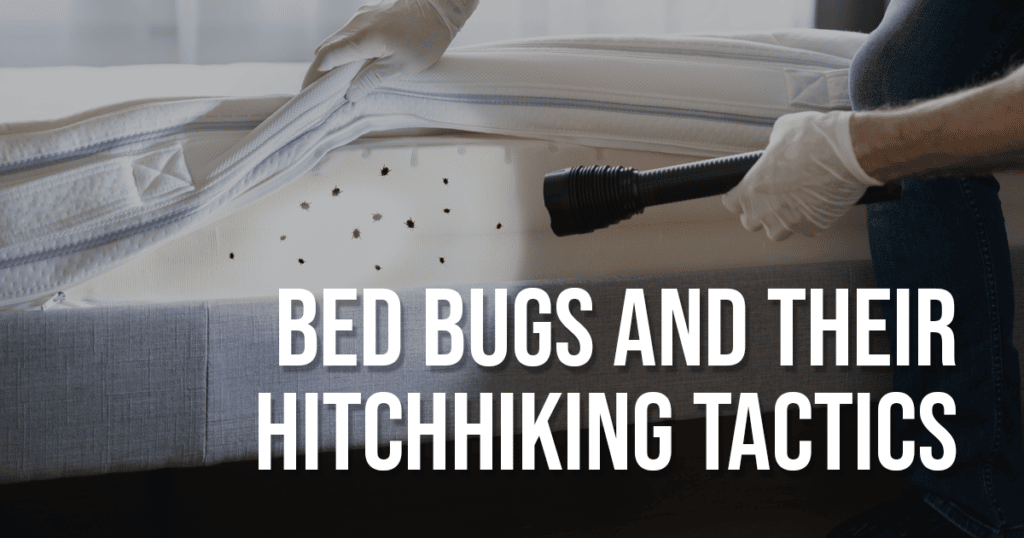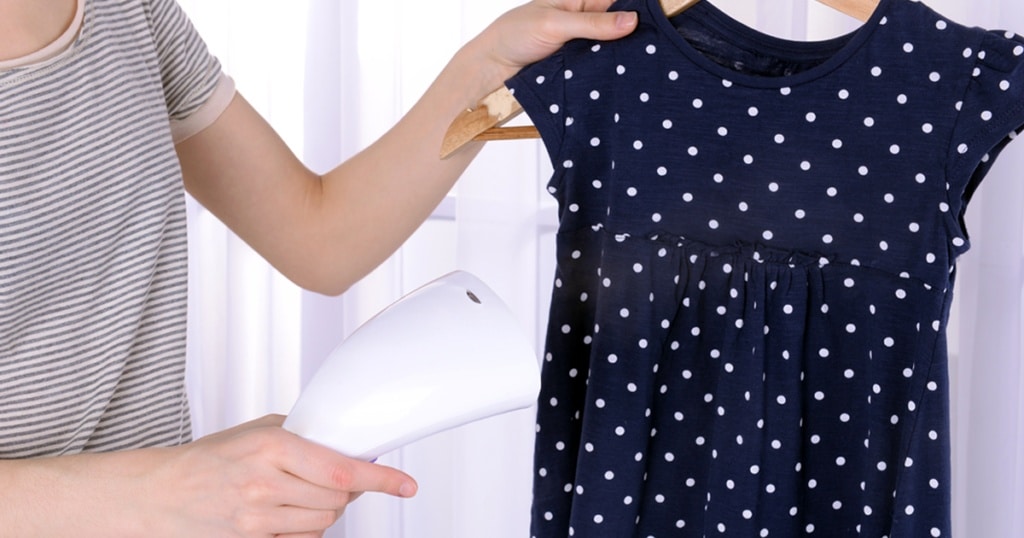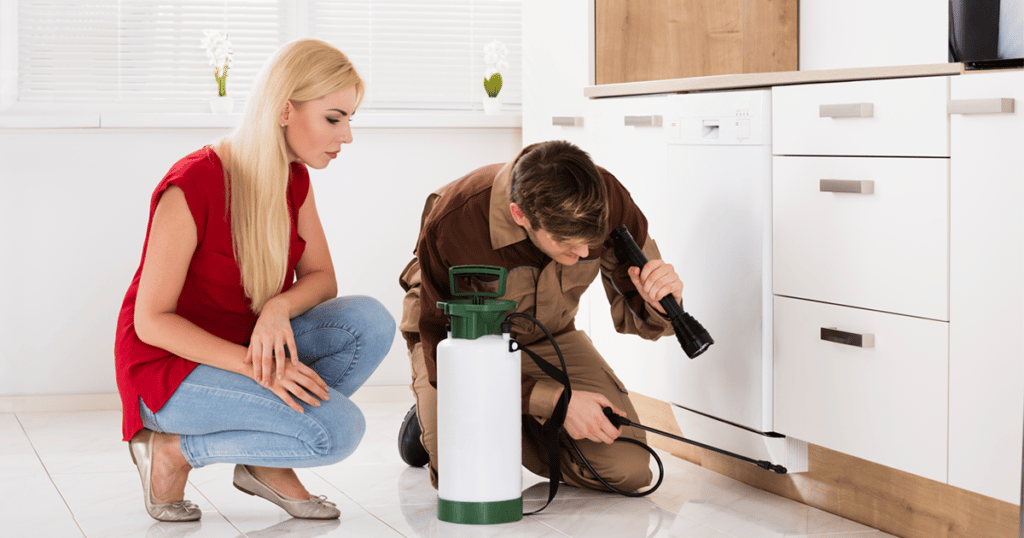Spring is here! Isn’t everybody excited for another crazy, party-filled, and forgettable spring break? Of course! Now that the temperatures are warmer, those pesky bugs and insects that infiltrated indoor spaces to overwinter would probably go out in the sun and return to their natural habitats. However, bed bugs are an exemption as these critters prefer to be with warm-blooded humans more.
Bed bugs depend on human blood to survive. Aside from that, they stay as close as possible to their blood meal as they are drawn to sweat and carbon dioxide. Thus, the spring season provides the perfect opportunity for this creepy crawlies to get to their host since a lot of people will most likely go out and travel in search of warmer destinations.
Bed bugs and their Hitchhiking Tactics

Bed bugs are such great hitchhikers and can effortlessly lodge onto clothes, luggage, bags, shoes, and other items people take with them when traveling. With this, these critters can transfer to places, tagging along with humans and hiding away in people’s belongings, cars, and/or suitcases, and then eventually infiltrate households without being noticed. As soon as bed bugs gain access to your property, it will be no time that their numbers increase and your home will be crawling with these pests.
Bed bugs are usually found in people’s bedrooms, especially in areas near the bed, where people would spend time resting. At night during bedtime, these tiny critters begin their activity and discreetly feed on people’s blood. Since they are so tiny, bed bugs are rarely spotted early on and their bites are not often noticed or felt immediately. Usually, people start to perceive the itch and discomfort of bed bug bites only after waking up the next day and oftentimes think they are only bitten by mosquitos.
Dealing with Bed Bugs this Spring

According to Tenley (2020) in her blog “Bed Bugs: The spring break souvenir that really BITES!,” the basic thing to do at first when you suspect you have bed bugs on your property is to call a licensed bed bug specialist to confirm and identify the pests and determine how bad the infestation is. She also advised avoiding the use of over-the-counter pesticides as they could only aggravate the problem and do more harm than good.
This spring, you can help protect your home from bed bugs and spare your family from the trouble and exasperation caused by these irritating pests. When it comes to bed bug removal, here are suggestions from experts:
1. If you are on a spring break escapade, wrap your luggage for the entire time of your trip.

One of the best strategies to keep those sneaky bugs from tagging along with you during travel is to protect your suitcases and belongings by placing them inside plastic bags or containers. Especially if you stay in hotels, you have a greater chance of getting bed bugs. Thus, you need to be careful when inside hotel rooms. If you are wise, you will do a thorough examination of the room you’re staying in, and check the bedding and mattress, wall, carpet, curtains, and other areas surrounding the bed for signs of bed bugs. As excellent hitchhikers, bed bugs can easily cling to fabric like clothing and tuck themselves in whatever tiny cracks there are in your belongings (i.e. shoes, bags, backpacks, and boxes).
2. Avoid putting your luggage next to the wall or on upholstered areas like carpet or bed in your hotel room.

Bed bugs love to dwell or hide in fabric. Thus, never place your belongings in areas where bed bugs could possibly be hiding. Experts advise putting your luggage on the luggage rack but make sure to keep it at a safe distance from the wall. They say that the safest place where you can safeguard your luggage from bed bugs is in the bathroom, particularly in the middle of the tiled floor.
3. Inspect all your belongings when coming from your vacation.

As soon as you arrive home from your trip, do not unpack right away. Instead, carefully check your suitcases and all other items you have brought with you. Do this outdoors like in the garage or utility room. As much as possible, let your staff stay there for a few days and only get them inside your home after thorough examination and treatment. How do you have your things treated against bed bugs? Read on.
4. Vacuum your backpacks, suitcases, bags, and other items you have brought during Travel.

Vacuum cleaning, as well as steam cleaning, is one of the best immediate means to exterminate bed bugs clinging and hiding in your suitcases, clothes, or bags. The vacuum helps suck out bed bugs, including their eggs, while the heat coming from the steamer dehydrates and kills the bugs. After vacuuming, just make sure you immediately dispose of the vacuum bag properly and secure it inside a plastic trash bag and then throw it out into a tightly sealed garbage can outdoors to prevent the disgusting creatures from escaping and crawling back to your home.
5. Apply heat when laundering and drying your clothes and linens.

One should be aware that bed bugs have zero tolerance for extreme temperatures. After you have finally unpacked, the wise thing to do is to put all washable items like clothes (even the unused ones from your trip) in the laundry and wash them using hot water. To further kill whatever remaining bugs hiding in your items, you can place them in the dryer under high heat settings. For non-washable items, placing them in the freezer for at least 24 hours is the way to go.
6. Purchase bed bug-proof encasements for your mattress and box springs.

Your bed is the bed bugs’ favorite place to hide so they can stay close to you during your slumber and do their sneak attack. Hence, if you want to keep bed bugs out of your way and enjoy a peaceful undisturbed sleep, you need to prioritize protecting your bed. To do this, you have to enclose your mattresses and box springs with bedbug-proof encasements. Encasements are designed in such a way that bed bugs will have no way of escaping orbiting through the material so that they are trapped in your mattress until they starve to death. You can purchase a set of encasements online or from local department stores. Some of the well-recommended brands are Sleep Guard, Mattress Safe, Protect-A-Bed, and CleanRest.
7. Get help from bed bug removal experts.

If you are having a bed bug problem and the infestation continues to get worse even after doing all preventive measures, it is time you bring in the pros. Licensed bed bug exterminators are the only ones allowed by law to conduct treatment procedures such as bed bug heat treatment or chemical treatment. These treatment methods are proven highly effective in terms of eliminating bed bugs. Bed bug professionals, in general, prefer heat treatment or heat remediation to get rid of bed bugs since it is safe to use and harmless to people, animals, and the environment. Moreover, it only takes at most 10 hours to complete the treatment process and a follow-up procedure is no longer needed. With heat treatment, bed bugs will be totally wiped, including those hiding in the deepest cracks or crevices, after several minutes of being exposed to heat.
Spot and get rid of bed bugs for good!

Dealing with bed bugs is a challenging and annoying experience, especially since these pesky pests are quite stubborn and not easily eliminated. Although no household is excused from bed bug infestations, an environment with too much clutter provides bed bugs extra rooms to hide and thrive. Therefore, if you want to get rid of these pests and keep them at bay, removing clutter and other potential hiding spots should be practiced.
You must also contact a pest control company in your locality for consultation and guidance on how you can help solve the problem on your end. In worst-case scenarios, having pest control professionals visit and inspect your home is an ideal move.
References:
https://www.westernexterminator.com/blog/bed-bugs-spring-break/

